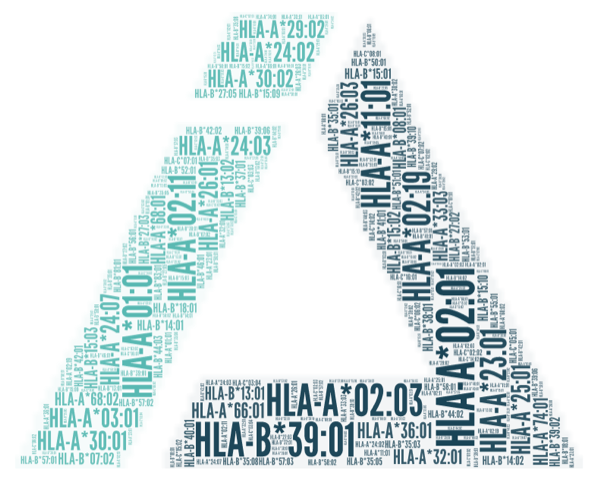HLA-A*02:01 (FLYALALLL) Class I Tetramer
HLA-A*02:01 FLYALALLL Class I Tetramer Developed and Manufactured by immunAware
Size: 50, 150, or 500 tests
Organism: EBV
Epitope: LMP-2 356-364 (IEDB#: 16979)
HLA: Recombinant HLA-A*02:01 with a C-terminal biotinylation.
Formulations: peptide-HLA-I monomer, biotinylated
peptide-HLA-I tetramer with PE or APC label
Buffer: Tris/Maleate PBS pH 7 containing 5% Glycerol
for Research Use Only
Assay Background
This HLA-A*02:01 FLYALALLL Class I Tetramer protocol is designed to evaluate the efficiency of peptide-HLA-I interaction and complex formation. The assay is based on detecting the β2-microglobulin (β2m) light chain subunit of recombinant HLA class I (HLA-I) complexes, where the heavy chain has been biotin tagged. These tagged complexes are subsequently captured by streptavidin coated beads, labelled with PE-conjugated anti-human β2m, and analyzed by flow cytometry. Since peptide-HLA-I complex formation is entirely peptide dependent, bead-associated signals will only be detected if the peptide in question supports the folding of the HLA-I allotype of interest; peptides that efficiently support folding will give strong signals whereas peptides that support folding sub-optimally, or not at all, will give moderate to non-detectable signals.
Related Products
HLA-A*02:01 (CLGGLLTMV) Class I Tetramer
HLA-A*02:01 (GLCTLVAML) Class I Tetramer
HLA-A*02:01 (YLLEMLWRL) Class I Tetramer
Recommendations
Please note that the staining intensity can vary between tetramer specificities, hence the tetramer concentration should be titrated the first time a specific tetramer is used. Note, it may be an advantage to stain for the same tetramer specificity with two different fluorochrome labels. It gives a more accurate definition of the tetramer positive population. It also allows for analysis of more than one T cell specificity in the same cell sample. Using various fluorochrome labeled tetramers each specificity can be defined by its unique two fluorochrome combination.


